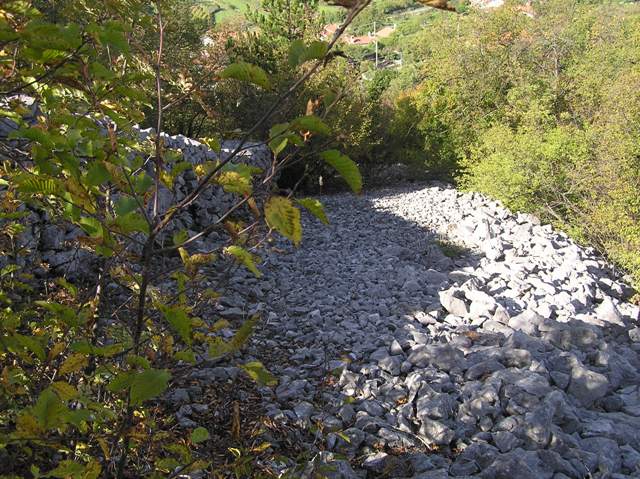
The outer rampart heads north east.

The outer rampart heads north east.

Further ramparts to the south, in the woods.

Inside the fort, this looking north west.

This in the centre of the fort is part of a gun emplacement used during first and second wars.

The south west ramparts.

Looking straight down to the southeast.

The ancient track leads to the centre of the fort.

Ancient trackway, rampart and wall to the south west, at the bottom of the hill.

Looking west down onto the small but beautiful village of Rupinpiccolo.

The western walls, flattened somewhat over the years by various wars.

The northern wall.

Looking north west over the Carse. Over the hills is Slovenia.

Our entrance was over the massive walls in the north.

Over the hills to the south are Trieste and the Adriatic Sea.

South east arc with entrance from the north.

The south east arc.

The north east wall.
We parked at main crossroads in the middle of the small but beautiful Carse village of Rupinpiccolo, near the information board. Take the tarred road heading east until it ends then follow a track heading south, marked by white/red painted signs, until the trees clear. This was a very pleasant walk in nice warm weather, the week before had seen torrential rain.
In this clearing there is the astonishing and dazzling white limestone east entrance to the fort. It is a stunning place. On the western side there is a similar steep access probably used to transport large weapons. The walls are gigantic being almost 4m tall and are at least 4 to 5m wide. They encircle the hill coming to at least 240m in length. Further down the hill there is a second defensive wall to the south. To the west there has been quarrying but luckily the locals seem to have repaired a lot of the damage.
Sadly this area, as we all know, has seen a lot of war through the centuries and this fort was used as a gun emplacement during World 1. Evidence of this can be seen on the summit of the hill. Trieste, one of Europe’s major ports, is just over the hills to the south.
I later found out that there are three more forts nearby surrounding Rupinpiccolo. In fact all the Slovenian/Italian border area is covered in prehistory. What an excellent reason to go back, which we will.
Visited 17/10/2017.
Rupinpiccolo Castle
The castle’s outer wall is 240 meters long and is distinguished by the presence of two access roads. The imposing remains of the walls led the local Superintendence to restore the site in view of its importance. The originally elliptical profile of the castle wall is now interrupted in its western part from the underlying quarry, but from the section it still perceives the robustness of the enclosure formed by a drywall wall, with the outer skirts formed by large limestone blocks and the internal filling made up of stones and earth, to give greater stability to the structure. The castellary had a purely defensive function and control of the territory: they are almost all places on the hills that enjoy a great view on the surrounding area and generally succeed in seeing each other, letting them think that in the era of for which the Second Millennium BC was used, there was a kind of network of reports between a castler and the other, so as to form a true line of defense.
Castelliere di Rupinpiccolo – Percorsi in Provincia di Trieste